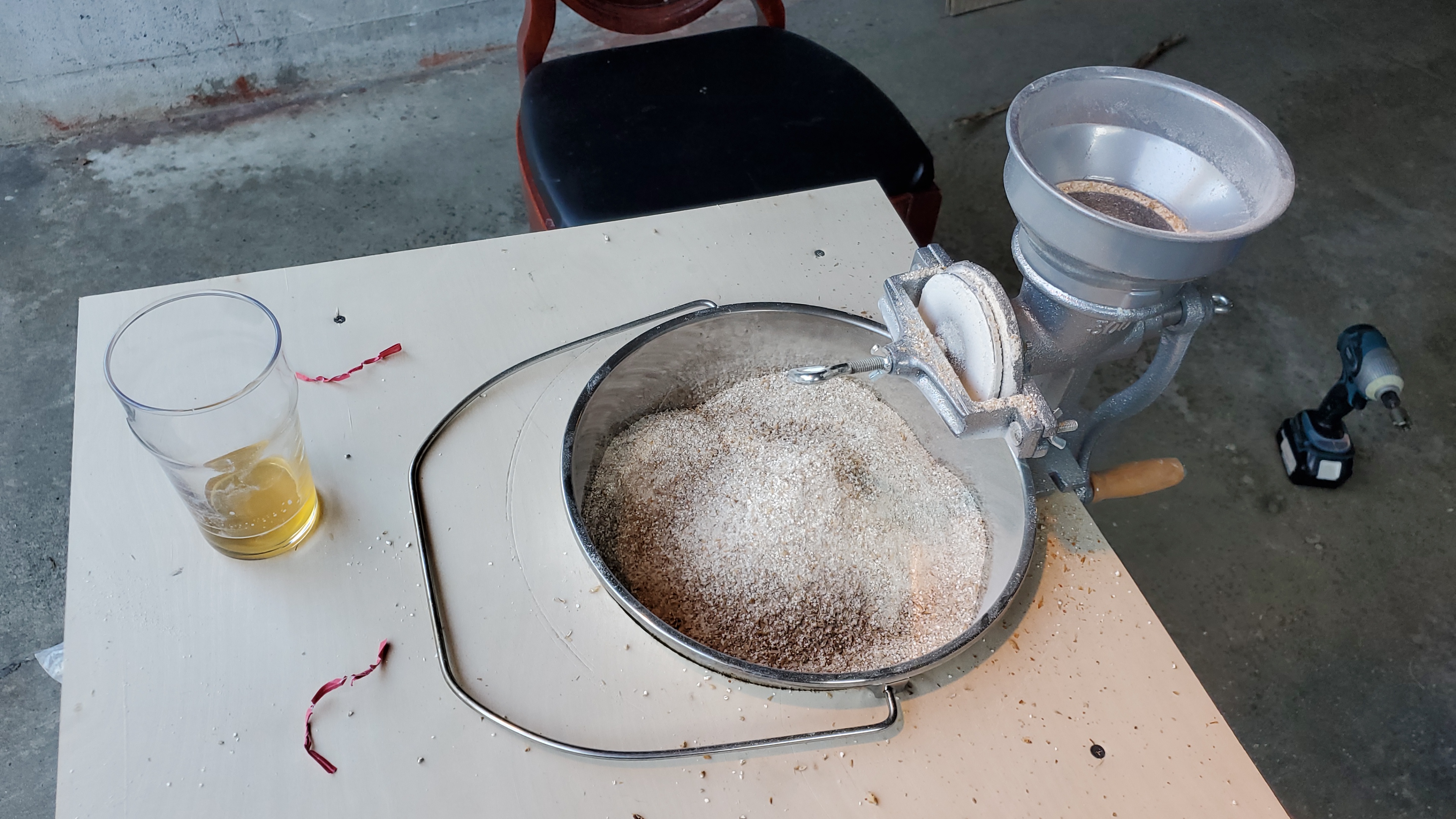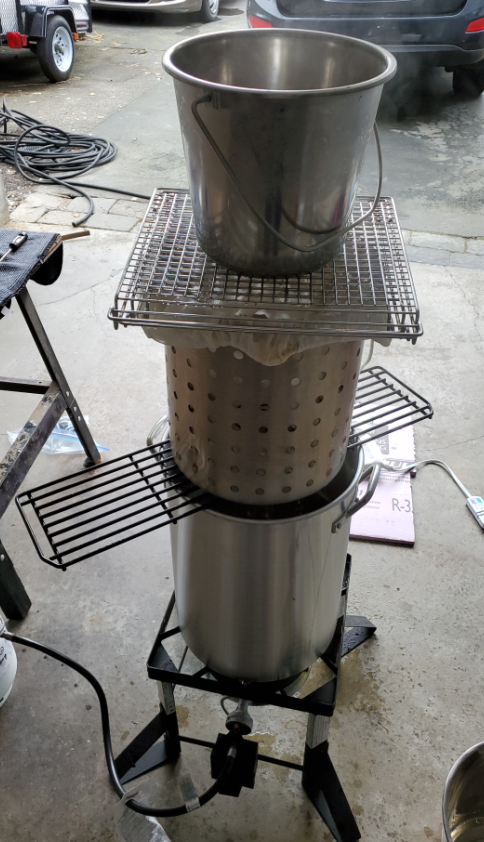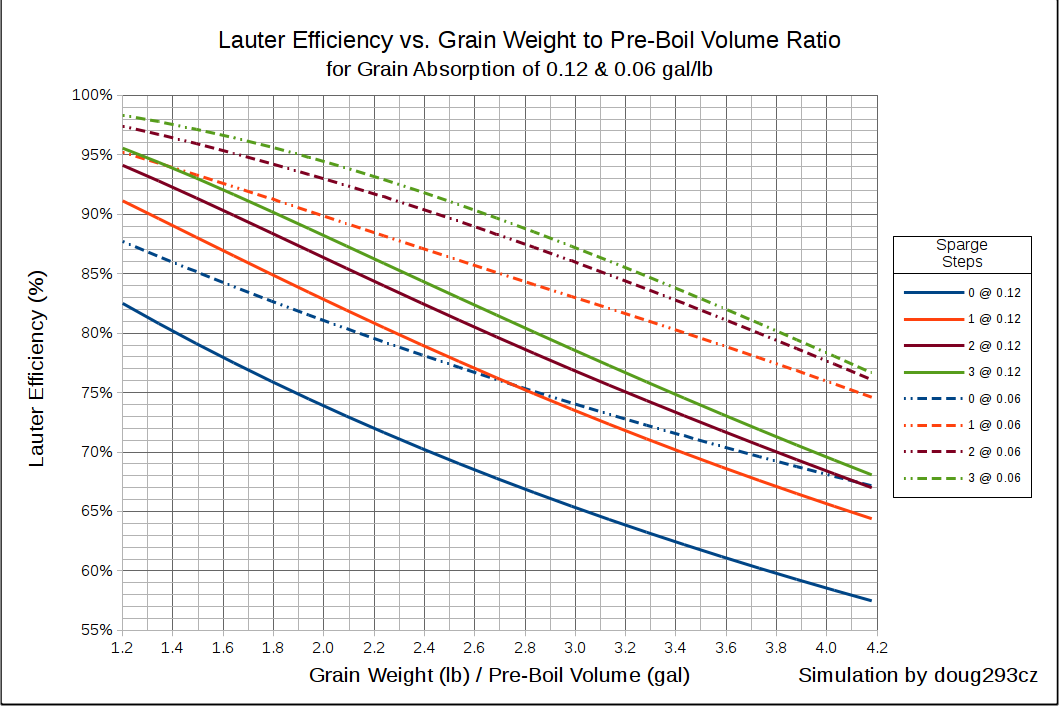Greetings!
I have been brewing with BIAB for a couple of years now, I am consistently at 68-70% efficiency and am looking to do a little better. I recently bought a mill hoping that would help increase my numbers, yet they are still roughly the same as I got with pre-crushed grains from Northern Brewer. I am unsure if I can tweak my process and was looking for feedback. Here is my brewday from yesterday, brewing Kama Citra from Northern Brewer (Mash has 9lbs Rahr 2-row and 1 lb Caramel 40). Shot for Mash temp of 152F
1. Start with 7 gallons RO water, pour 5 into kettle(8 gallon kettle).
2. Add 4g Calcium Chloride and 7g Gypsum to kettle with 5 gal. water.
3. Heat water to 158F.
4. Crush grains while heating water (grain mill set to thickness of credit card, about .03), ran grains once.
5. Place bag into kettle, add grains, mix. Water Temp after adding in grains at 153F
6. Wrap kettle in blanket, give grains a mix every 15-20 minutes. Mash for 90 minutes.
7. Temp at end of 90 minute mash is 146F.
8. Remove bag and place in second kettle with the remaining 2 gallons of water, warmed to about 140F.
9. Stir well and let sit for about 10 minutes.
10. Drain grains, squeeze all I can out of the bag, pour the 2 gallons into the big kettle, then brewed recipe as normal.
Ended up with about 4.9 gallons into the fermenter at 12.8 Brix(Gravity 1.052). I ended with 69.77% efficiency according to BrewersFriend.
Any feedback/ advice/ ideas would be greatly appreciated. I am quite happy with what I brew, I am just wanting to get better at it!
Thanks in advance!
I have been brewing with BIAB for a couple of years now, I am consistently at 68-70% efficiency and am looking to do a little better. I recently bought a mill hoping that would help increase my numbers, yet they are still roughly the same as I got with pre-crushed grains from Northern Brewer. I am unsure if I can tweak my process and was looking for feedback. Here is my brewday from yesterday, brewing Kama Citra from Northern Brewer (Mash has 9lbs Rahr 2-row and 1 lb Caramel 40). Shot for Mash temp of 152F
1. Start with 7 gallons RO water, pour 5 into kettle(8 gallon kettle).
2. Add 4g Calcium Chloride and 7g Gypsum to kettle with 5 gal. water.
3. Heat water to 158F.
4. Crush grains while heating water (grain mill set to thickness of credit card, about .03), ran grains once.
5. Place bag into kettle, add grains, mix. Water Temp after adding in grains at 153F
6. Wrap kettle in blanket, give grains a mix every 15-20 minutes. Mash for 90 minutes.
7. Temp at end of 90 minute mash is 146F.
8. Remove bag and place in second kettle with the remaining 2 gallons of water, warmed to about 140F.
9. Stir well and let sit for about 10 minutes.
10. Drain grains, squeeze all I can out of the bag, pour the 2 gallons into the big kettle, then brewed recipe as normal.
Ended up with about 4.9 gallons into the fermenter at 12.8 Brix(Gravity 1.052). I ended with 69.77% efficiency according to BrewersFriend.
Any feedback/ advice/ ideas would be greatly appreciated. I am quite happy with what I brew, I am just wanting to get better at it!
Thanks in advance!














![Craft A Brew - Safale S-04 Dry Yeast - Fermentis - English Ale Dry Yeast - For English and American Ales and Hard Apple Ciders - Ingredients for Home Brewing - Beer Making Supplies - [1 Pack]](https://m.media-amazon.com/images/I/41fVGNh6JfL._SL500_.jpg)
















































